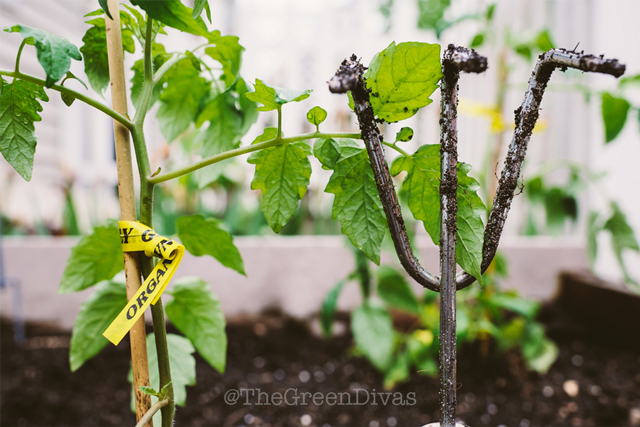
Garden mentor, Green Diva Ali talks about tips for planting your spring garden on this episode Green Divas in the Garden podcast:
Wondering what gardening chores to do in May?
I’ve put together this May gardening guide—what to plant, harvest and care for this month! Here in the northwest suburbs of Chicago, our frost-free date (the last average date of a frost) is May 15th. You can adjust the timing of your “to-dos” by looking up your own frost-free date and adding or subtracting weeks as appropriate.
There are many sources for frost-free dates on the Internet—I like to use the Farmer’s Almanac version, which also provides information about planting with the moon cycles (waxing and waning–another post!) We’ve already been planting cool season annuals and vegetables in April and by the end of May we begin to plant warm season flowers and crops in the ground outdoors.
PLANT
Trees and shrubs, ground covers, vines, grasses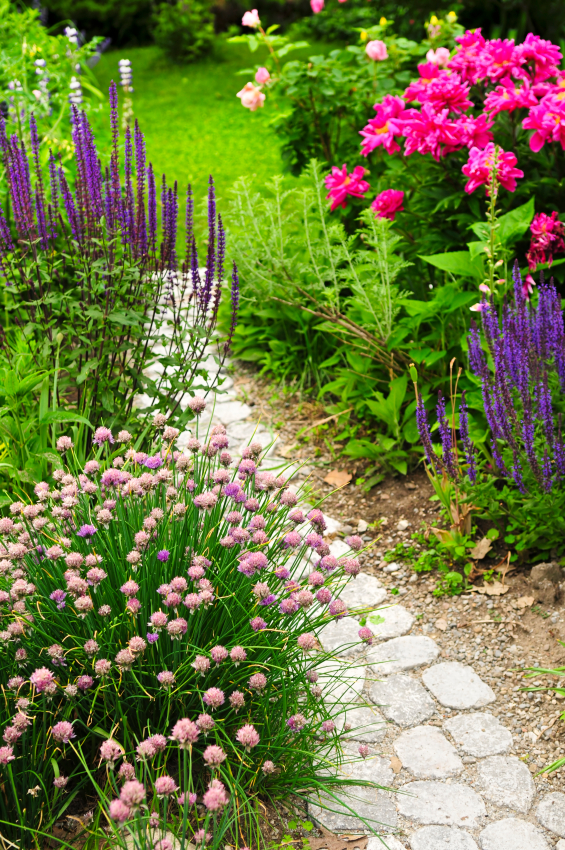
This year especially (we’re having cool weather longer than usual), there’s still time to plant trees and shrubs, ground covers, grasses and most vines. This gives them time to establish roots before the heat of summer comes on.
Be sure to water all new plants carefully as needed for at least the first year and two years for trees and large shrubs. This is also a good time of year for us to aerate our lawns (we have cool season turf grasses).
Vegetables and fruit
We’re just about to do our second planting of peas, beets, carrots, lettuces, radishes and spinach. This is a good time to plant bare-root strawberry plants for fruit next year and thereafter. Early in the month you can still plant onion sets, early potatoes, asparagus crowns and shallots.
At the end of the month, when the soil temperature exceeds 60 degrees F, plant tomatoes, peppers, eggplants, cucumbers, beans, squash and corn. You can plant seeds outdoors or purchase seedlings for transplants.
Plant beneficial companions to promote natural pest control and add beauty to the vegetable garden. For example, marigolds are said to repel pests near tomatoes.
Herbs
Plant seeds of annual herbs in pots indoors at this time of year for transplanting to the garden. These include basil, chamomile, borage, dill and cilantro. I usually also plant nasturtiums in the herb garden along with Johnny Jump-ups since they are both edible.
Perennials
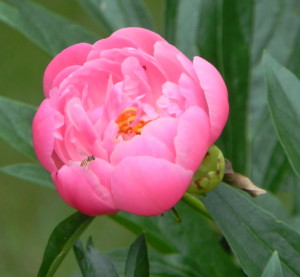
When planting either new or divisions of existing perennials, be sure to prepare the soil well since the plants will be there for a long time. Do not divide spring blooming perennials until after they bloom.
Did you know you could plant your Easter lily in the garden after the frost-free date? Keep the leaves growing and it should bloom next June in your garden. I have several from previous years. I just have to beat the deer to the flowers.
Annuals
We planted annual sweet peas, cleome, poppies, calendula, alyssum and baby’s breath late April/early May. After the soil warms up later in the month and into June we’ll plant zinnias, cosmos, scarlet runner beans (vine), gourds (especially birdhouse and luffas) and amaranth.
Check out our YouTube channel to see GD Meg’s short, funny tutorial on making super easy, very effective nature, non-toxic anti-critter spray…
And read more and see the written recipe here!
[dynamic-sidebar id=’Custom Widget 2′]
HARVEST
Early in the month we’re harvesting rhubarb, asparagus, lettuce, radishes and garlic chives. We cut flowers and foliage for the house and offices too, and May is an easy month with lilacs and spring-flowering viburnums blooming.
CARE
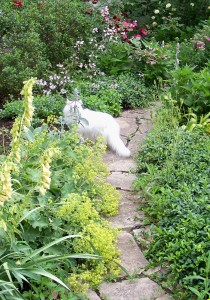
- Edge planting beds to keep turfgrass from creeping into them.
- Weed now to get control of weeds. You can still see where the roots are and remove them before they get too large and, more importantly, before they reproduce by going to seed or spreading underground.
- Fertilize by adding compost under new plantings, divisions and consider a top-dressing of compost on established beds of perennials as natural fertilizer and soil conditioner.
- Water seedbeds if rain is not keeping the soil moist.
- Prune flowering shrubs like lilacs soon after flowering so you’re not removing next year’s flower buds. If you haven’t already, prune out raspberry and blackberry canes that bore fruit last year. Begin pinching the top 1-2 inch tips of your hardy mums so they’ll turn into round mounds by the end of the season. You’ll do this every two or three weeks until the 4th of July.
- Tie clematis and other vines onto structure for support. Stake tall blooming plants that require it (delphiniums, for example.)
Control Pests/Diseases
The best care is a walk around the garden every morning and evening (preferably with a cocktail). Catching a problem early is the best way to control it. So is prevention. For example, protect carrots and cabbage with row covers to exclude cabbage root maggot and carrot rust fly. Put deer netting up over phlox, yew, hosta and other susceptible plants.
Have insecticidal soap ready (make sure it’s eco-friendly!) if you see aphids.
These are just a few of the many chores you will have in May. An investment of your time and attention now will yield healthy plants, fruits and vegetables in the weeks to come.
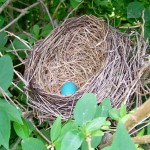 Any questions about May gardening—or anything about gardening? Please feel free to write me!
Any questions about May gardening—or anything about gardening? Please feel free to write me!
~ Green Diva Ali
Green Diva Meg
May 3, 2014 at 8:15 am
can’t wait to get out there and play this weekend!
Pingback: May Gardening “To-Dos” - Eco Save Earth